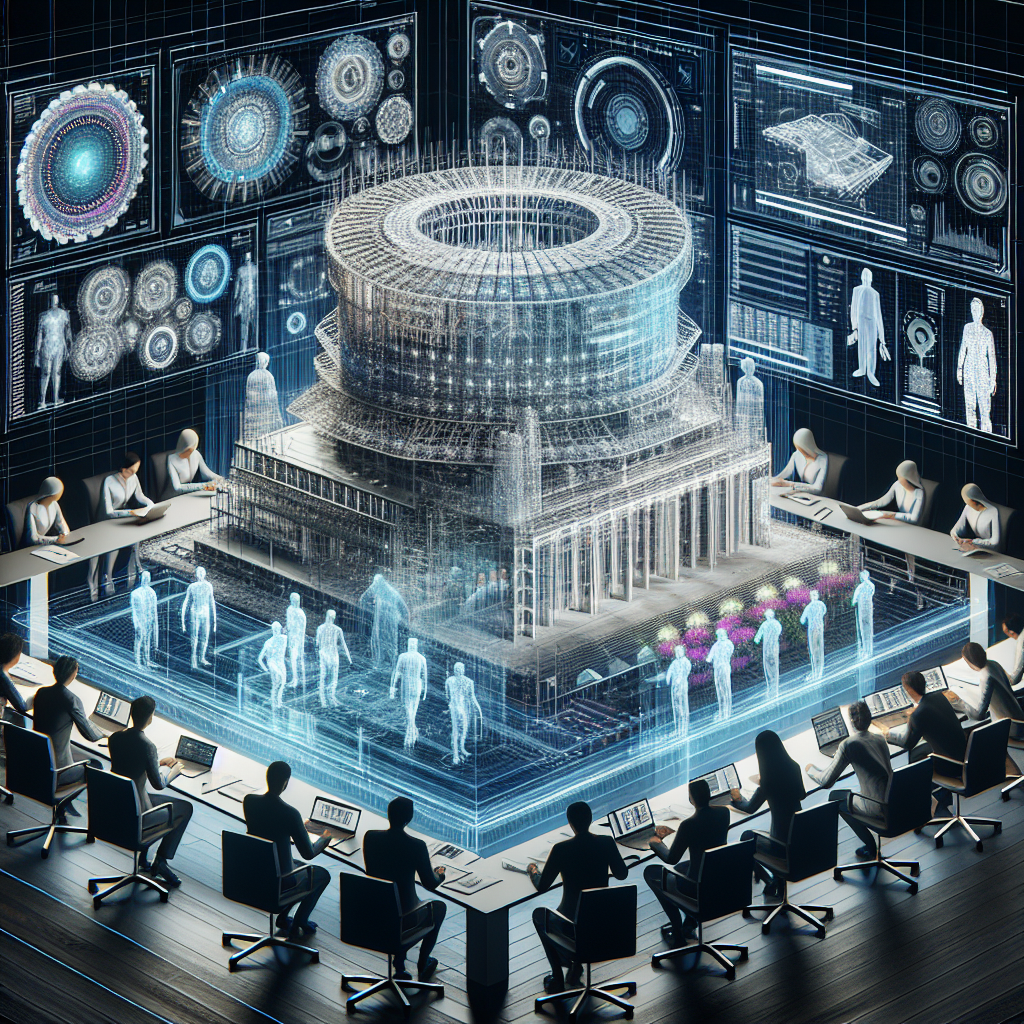AI-Powered Tools for Building Information Modeling (BIM)
Building Information Modeling (BIM) has revolutionized the way architects, engineers, and construction professionals design and manage building projects. BIM allows for the creation of a digital representation of a building, which includes detailed information about its physical and functional characteristics. This information can be used throughout the entire lifecycle of a building, from design and construction to operation and maintenance.
With the advancement of Artificial Intelligence (AI) technology, AI-powered tools are now being integrated into BIM software to enhance its capabilities and provide users with more efficient and accurate solutions. These tools can help automate repetitive tasks, analyze data, and make predictions to improve the design process and optimize building performance.
In this article, we will explore some of the AI-powered tools that are currently being used in BIM software and how they are transforming the way buildings are designed and constructed.
1. Generative Design
Generative design is a process where AI algorithms are used to generate multiple design options based on specified parameters and constraints. This allows designers to explore a wide range of design possibilities and quickly evaluate their performance based on different criteria such as cost, energy efficiency, and structural integrity.
Generative design tools can help architects and engineers come up with innovative design solutions that they may not have considered otherwise. These tools can also optimize designs for specific criteria, such as minimizing material waste or maximizing natural light in a building.
2. Automated Drawing Generation
AI-powered tools can automate the process of generating detailed drawings from 3D models created in BIM software. These tools can analyze the 3D model and automatically generate 2D drawings with accurate dimensions, annotations, and symbols.
Automated drawing generation can save designers and drafters a significant amount of time by eliminating the need to manually create drawings from scratch. This allows them to focus on more critical tasks, such as refining the design or coordinating with other team members.
3. Clash Detection
Clash detection is a crucial part of the BIM process, where potential conflicts between different building elements are identified and resolved before construction begins. AI-powered clash detection tools can analyze the 3D model and automatically detect clashes between structural, mechanical, electrical, and plumbing systems.
These tools can help prevent costly rework and delays during construction by identifying clashes early in the design phase. They can also provide recommendations for resolving conflicts, such as adjusting the location of a duct or rerouting a pipe.
4. Energy Analysis
AI-powered energy analysis tools can simulate the energy performance of a building based on its design and location. These tools can analyze factors such as building orientation, materials, and shading to predict energy consumption and identify opportunities for improving energy efficiency.
Energy analysis tools can help architects and engineers optimize the design of a building to reduce energy costs and environmental impact. By simulating different design options and comparing their energy performance, designers can make informed decisions that prioritize sustainability and energy efficiency.
5. Predictive Maintenance
AI-powered predictive maintenance tools can analyze data from sensors installed in a building to predict when equipment may fail or require maintenance. These tools can monitor the performance of building systems, such as HVAC, lighting, and security, and alert facility managers when issues are detected.
Predictive maintenance tools can help reduce downtime and maintenance costs by identifying potential problems before they occur. By proactively addressing maintenance issues, building owners can extend the lifespan of their equipment and ensure the comfort and safety of occupants.
FAQs
Q: How can AI-powered tools benefit the construction industry?
A: AI-powered tools can benefit the construction industry by automating repetitive tasks, improving efficiency, and reducing errors in the design and construction process. These tools can help architects, engineers, and construction professionals save time and resources while delivering higher-quality buildings.
Q: Are AI-powered tools easy to use for beginners?
A: While AI-powered tools may have a learning curve for beginners, many BIM software vendors provide training and support to help users get started. With practice and experience, users can become proficient in using AI-powered tools to enhance their design capabilities and streamline their workflow.
Q: What are some challenges associated with using AI-powered tools in BIM?
A: Some challenges associated with using AI-powered tools in BIM include data privacy and security concerns, integration with existing software and systems, and the need for specialized skills and training. It is essential for organizations to address these challenges proactively to maximize the benefits of AI-powered tools in BIM.
In conclusion, AI-powered tools are transforming the way buildings are designed and constructed by enhancing the capabilities of BIM software and providing users with more efficient and accurate solutions. From generative design and automated drawing generation to clash detection and predictive maintenance, AI-powered tools are revolutionizing the construction industry and enabling architects, engineers, and construction professionals to deliver higher-quality buildings that are more sustainable and energy-efficient. With continued advancements in AI technology, the future of BIM looks promising, with even more innovative tools and solutions on the horizon.

